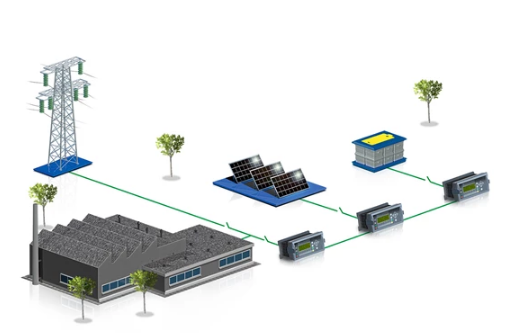
MICROGRIDS – THE NEXT EVOLUTION OF THE GRID
Microgrids are on the rise. A microgrid is a grouping of distributed energy sources with control capabilities and can work with the grid or operate autonomously as dictated by demand. It is essentially a smaller version of the grid with several advantages. These advantages include the capability to operate when the main grid is down, a provision of stability in strengthening the grid by reducing grid disruptions, and an increase in efficiency due to the use of local energy sources which mitigate energy losses in the processes of transmission and distribution.
Ironically, the utility grid originated as a microgrid. In the early days, they were used primarily to serve remote areas where there was significant demand for power, but not enough to offset the costs associated with establishing transmission lines from distant power plants. The modern-day utility grid has not proven infallible to power outages, natural disasters, solar storms, and terrorist attacks. However, microgrids can provide a safeguard against failures and disturbances. Microgrids can operate autonomously, which means should the grid fail, the microgrid can continue operating through island operation mode. Islanding is when electric loads are separated from the central utility grid and run independently on local distributed energy resources (DER). This ability of cellular control, where individual cells would be capable of operating independently even with grid failure is a microgrid’s ace.
 Benefits of Microgrids
Benefits of Microgrids
Microgrids use localized renewable energy sources for power generation, thus making them more environmentally friendly. They are able to work in conjunction with the utility grid and address specific user needs and demands. They are mostly automated with smart technology and intelligent controls that can anticipate problems and failures and reconfigure itself to account for them. Automation also allows for improved service reliability, an attribute that data centric companies are looking for and the presence of which could provide an additional revenue stream to that community. Corporations and organizations such as data centers, hospitals, military bases, and research labs cannot afford even a momentary power blip.
The main benefits of microgrids are reliability, efficiency, security, and sustainability. The ability of microgrids to connect and disconnect from the grid will allow them to provide a reliable source of power should the grid fail. Microgrids are efficient because the use of local sources of renewable energy would reduce energy losses in transmission and distribution. They enable us to be more energy secure because it allows us to rely less on foreign fossil fuels, which are susceptible to market fluctuations and supply disruptions. All of this can lead us to a path of sustainability.
Some key drivers to microgrid projects include electrification needs in remote areas and developing countries, grid security, grid optimization, demand for lower cost energy alternatives, and the use of more environmentally friendly energy sources. There are state requirements that renewables have to be utilized by a certain deadline. The implementation of microgrids can help close the gap.
Microgrids can counter the effects of climate change through the use of renewable energy and storage, thereby reducing carbon emissions and making them much more energy efficient. Climate change can cause weather fluctuations, manifesting in droughts, heat waves, wildfires, etc. All of these natural disasters can negatively impact the grid by inhibiting its ability to operate efficiently and effectively. It could also pose a security risk as vulnerabilities would be exposed, which could lead to serious repercussions.
Microgrids can serve remote communities. They empower consumers by enabling them to generate their own power to meet their individual needs. There is a flexibility to use a wider range of renewable energy sources such as solar and wind. Microgrids streamline local peak power loads and resource requirements through the use of local energy sources, thus increasing efficiency of the system. Local generation is not only a cost benefit, but also environmental as it does not have to travel far distances to reach consumers, thereby reducing carbon emissions.
Microgrid operations can cause wide-reaching impacts with environmental benefits such as the reduction of harmful emissions like greenhouse gases and other pollutants, the scaling down of the reliance on fossil fuels, and the promotion of economic growth through local employment creation. As our reliance on finite fossil fuels cannot continue much more into the future, our goal to wean off them to become sustainable lies in renewable energy. Microgrids can provide that solution.

